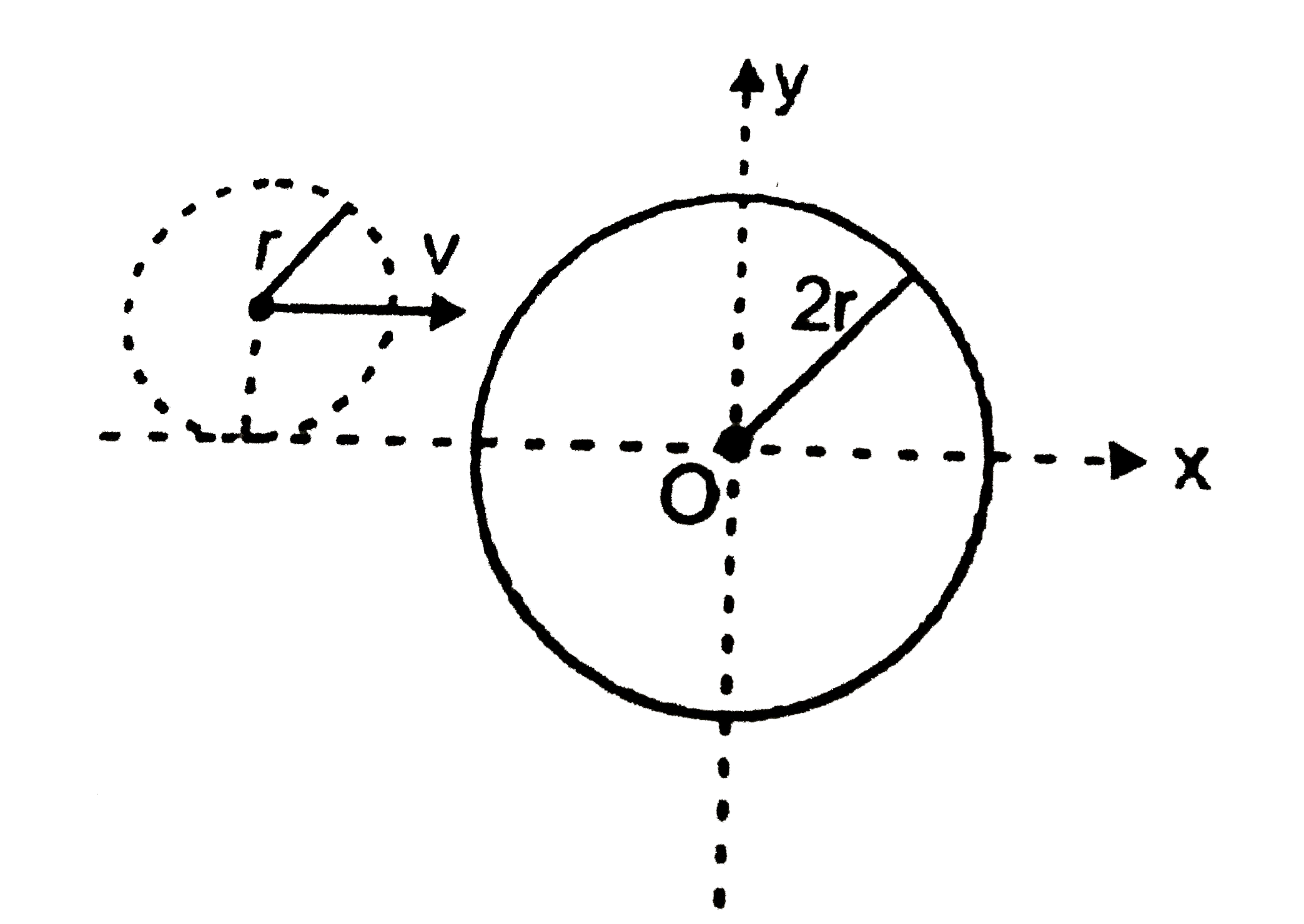A small particle travelling with a velocity v collides elastically with a spbereical body of equal masss and of radius r initially kept at rest. The centre of this spherical body is located a distnce ρ(<r) away from the direction of motion of the particle figure. Find the final velocities of the two particles.

The correct Answer is:A, B, C, D
Let the mass of both the particle and the spherical body m the particle velocity v has two components vcosα normal to the sphere and vsinα tangential to the sphere.
After the collision, they will exchanged their velocity . So, the spherical body wil have a velocity vcosα and the particle wl not have any component of velocity in this direction.
[The collision will be due to the component vcosα in the normal direction
but, the tantential velocity, of the particke vsiNAlpha will be uN/Affected]
So, velocity of the sphere =vcosα
=vr√r2−p2
and velocity of the particle =vsiNAlpha
vpr.
Topper's Solved these Questions
- CENTRE OF MASS, LINEAR MOMENTUM, COLLISIONBOOK - HC VERMACHAPTER - CENTRE OF MASS, LINEAR MOMENTUM, COLLISIONEXERCISE - Objective 2
11 Videos
- CALORIMETRYBOOK - HC VERMACHAPTER - CALORIMETRYEXERCISE - Exercises
18 Videos
- CIRCULAR MOTIONBOOK - HC VERMACHAPTER - CIRCULAR MOTIONEXERCISE - Exercises
30 Videos
Similar Questions
A particle of mass m1 moves with velocity v1 and collides with another particle at rest of equal mass. The velocity of the second particle after the elastic collision is
View SolutionA particle of mass m moving with velocity v0 collides with sphere of same mass at rest , as shown. If the surface of contact is smooth and the collision is elastic, find the velocities of particle and sphere after the collision.

View Solution
Knowledge Check
A particle of mass m travelling with velocity v and kinetic energy E collides elastically to another particle of mass nm, at rest. What is the fraction of total energy retained by the particle of mass m?
A(n+1n)2B(n+1(n−1)2)C(n−1n+1)2Dnone of theseA particle of mass 2kg is initially at rest. A force starts acting on it in one direction whose magnitude changes with time. The force time graph is shown in figure. Find the velocity of the particle at the end of 10s.
 A45ms−1B50ms−1C40ms−1D60ms−1
A45ms−1B50ms−1C40ms−1D60ms−1A partical of mass m moving with velocity 1m/s collides perfectly elastically with another particle of mass 2m. If the incident particle is deflected by 90∘. The heavy mass will make and angle θ with the initial direction of m equal to:
A60∘B45∘C15∘D30∘
A particle of mass m with an initial velocity uˆi collides perfectly elastically with a mass 3 m at rest . It moves with a velocity vˆj after collision , then , v is given by :
View SolutionA particle of mass 2kg is initially at rest. A force starts acting on it in one direction whose magnitude changes with time. The force time graph is shown in figure. Find the velocity of the particle at the end of 10s.

View SolutionA body of mass m moving with velocity uˆi collides elastically with a body at rest of mass 3m and then the final velocity of body mass m is v ˆj. Find the relation between v and u
View SolutionA small smooth disc of mass m and radius moving with an initial velocity 'v' along the positive x− axis collided with a big disc of mass 2m and radius 2r which was initially at rest with its centre at origin as shown in figure.

If the coefficient of restitution is 0 then velocity of largen disc after collision is
View SolutionA particle at a distance r from the centre of a uniform spherical planet of mass M radius R (ltr) has a velocity of magnitude v.
View Solution